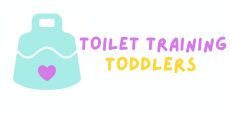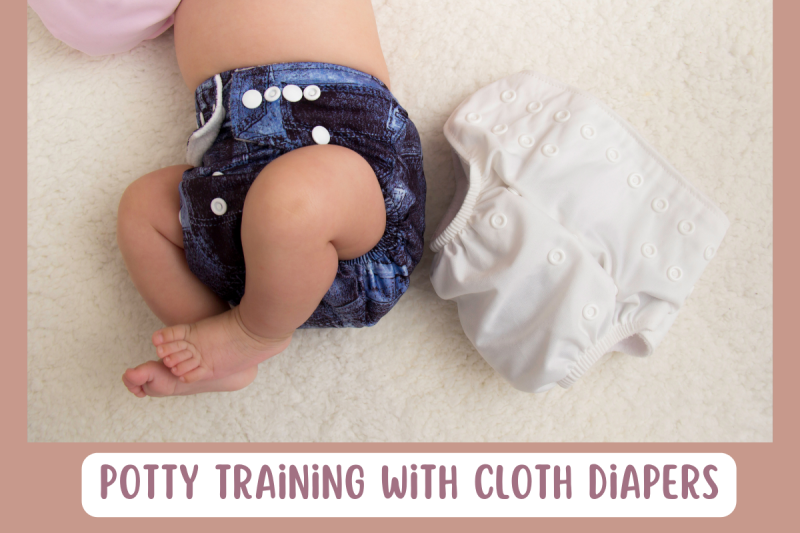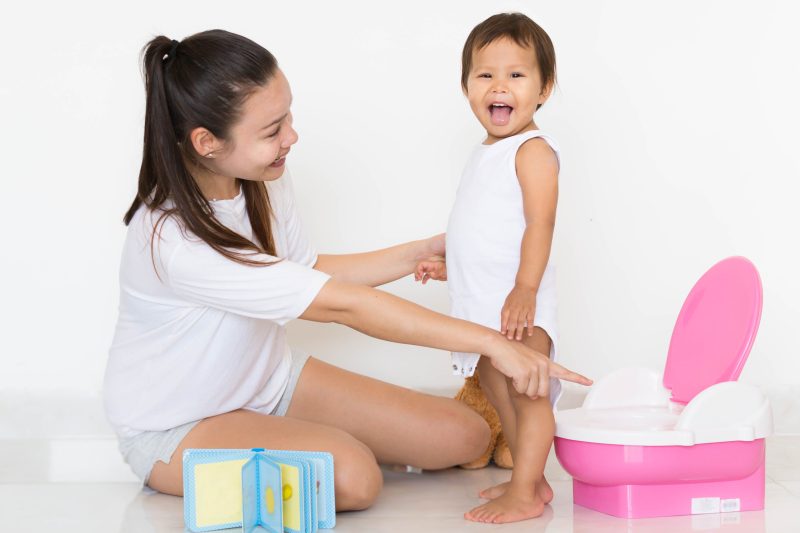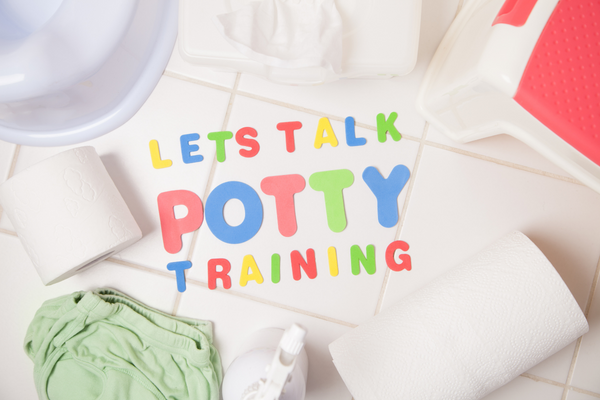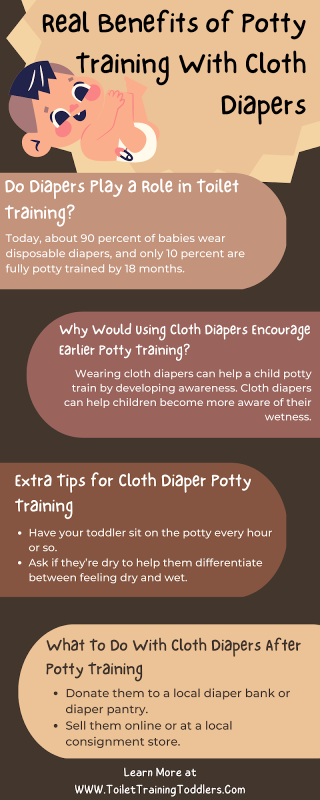Using cloth diapers has many benefits, but the one potential benefit that’s not explored thoroughly is that they can help your toddler during their potty training journey.
Although there is no scientific study showing that cloth diapers can accelerate the potty training process, we can tell you from our own experience that they can help.
In this post, we’ll discuss the difference between the children wearing disposable diapers and the fully cloth-diapered babies of the past. We’ll also explain how potty training with cloth diapers can make the process faster and more successful.
Disclaimer: This blog post contains affiliate links . If you use them, we might be rewarded credit or a commission of the sale. Please note that we only recommend tools that we personally use and love and we always have our readers’ best interest at heart.
Do Diapers Play a Role in Toilet Training?
According to Priceonomics’ statistics, all babies in the 1950s used to wear cloth diapers or underwear, and 95 percent of them were completely potty trained at 18 months.
Today, about 90 percent of babies wear disposable diapers, and only 10 percent are fully potty trained by 18 months. In addition, statistics also show that most children are now potty trained by 36 months.
So, it’s safe to say that cloth diapers may play a key role in encouraging earlier potty training.
Why Would Using Cloth Diapers Encourage Earlier Potty Training?
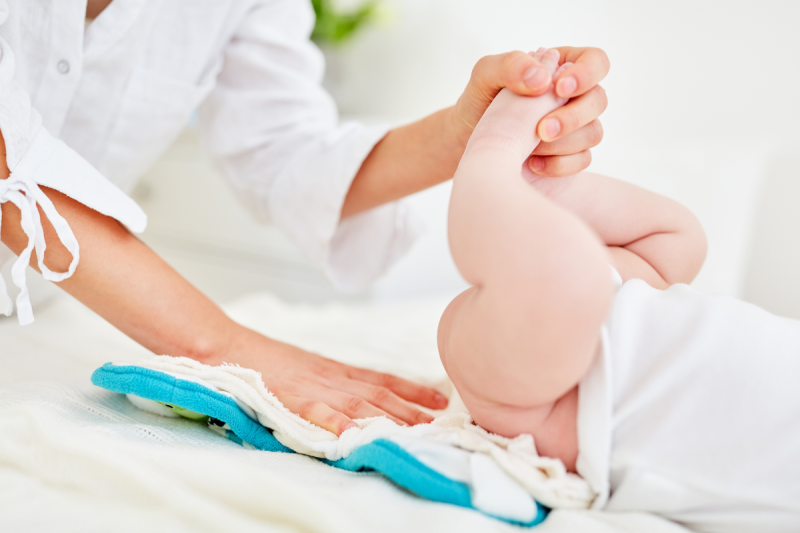
Wearing cloth diapers can help a child potty train by developing awareness. Cloth diapers can help children become more aware of their wetness, which is a helpful aspect of potty training.
When toddlers feel wet or uncomfortable in their diapers, they may become upset and signal that they need to be changed. It can help reinforce a preference for a dry bottom and be a vital step in potty training.
On the other hand, children wearing disposable diapers don’t feel wet because of sodium polyacrylate, which keeps the diaper dry.
Note: Keep in mind that accidents will happen (lots of them) in cloth diapers, too. However, they can encourage your little one to sit on the potty to finish their business.
Additional Benefits
There are more reasons why people choose cloth diapers, and here are the most compelling ones.
Affordability
Cloth diapers are more affordable in the long run—especially if you plan to have more children—because they are reusable and durable.
Hint – our favorites are the Alvababy Cloth Diapers.
Environmental Impact
Cloth diapers produce less waste and are more environmentally friendly than disposable ones, which take hundreds of years to decompose.
Comfort
Some children feel more comfortable wearing diapers made of cloth than disposable ones, which may contain chemicals and other irritants.
Health Benefits
Cloth diapers are less likely to cause diaper rash or other skin irritations as they allow the skin to breathe and do not contain chemicals or perfumes.
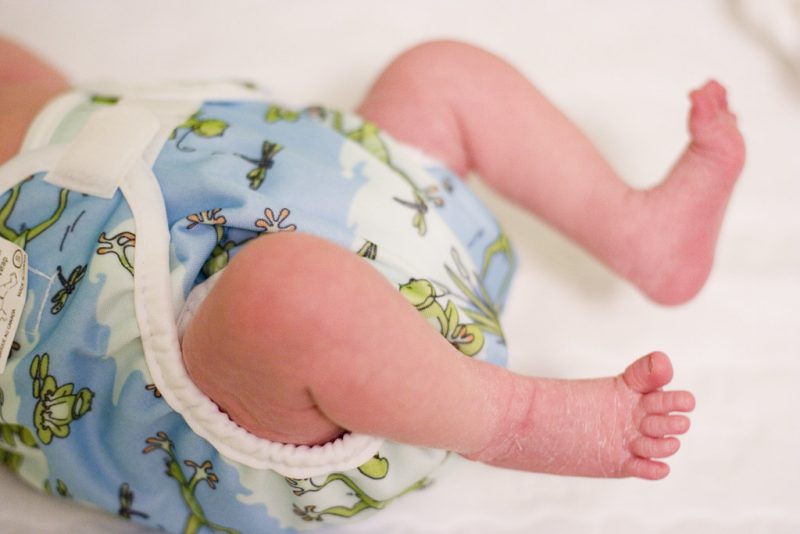
Extra Tips for Cloth Diaper Potty Training
Here’s a list of tips you can follow to potty train your toddler using cloth diapers.
- If your child is showing signs of being ready for potty training, start with cloth diapers instead of disposable ones. But if they are already wearing disposable diapers, consider using the cold turkey method and stop using them immediately.
- Designate at least a full week to potty training and stay close to home.
- Make sure that you keep in mind that no disposable diapers are allowed except at night or during naps.
- Have your toddler sit on the potty every hour or so.
- Ask if they’re dry to help them differentiate between feeling dry and wet.
- Reward them when they do their business on the potty, but never get frustrated if an accident happens.
Be patient, stay consistent, and repeat the tips listed above for the entire week. Your toddler may show some resistance during the week but stay patient and stick to the plan.
Don’t Forget To Use a Cover
A diaper cover is a type of underwear toddlers wear over a disposable or cloth diaper to keep the diaper in place and prevent leaks. It reduces the risk of accidents and spills and makes it easier for children to stay clean and dry during the training process.
Diaper covers are typically made of a water-resistant or waterproof material, such as polyester or nylon. They fit snugly over the diaper and have elastic around the legs and waist.
However, remember that diaper covers are not a substitute for regular diaper changes and that you should still change children regularly to prevent irritation and discomfort.
What To Do With Cloth Diapers After Potty Training
Once your child is potty trained and no longer using cloth diapers, you have a few options for what to do with them.
- Donate them to a local diaper bank or diaper pantry. These organizations provide cloth diapers to families in need, so your gently used diapers can help another family save money and reduce waste.
- Sell them online or at a local consignment store. Many families are interested in using cloth diapers, so you may be able to recoup some of the cost by selling them to someone else.
- Repurpose them for other uses around the house. Cloth diapers can be used as cleaning cloths, rags, or even as absorbent layers in a homemade pet bed.
- Dispose of them responsibly. If the cloth diapers are too worn or soiled to be used again, you can cut them and throw them away. Alternatively, check with your local waste management facility if they have a program for disposing of such items.
Whatever you decide to do with your cloth diapers, consider the environmental impact of your choices and dispose of them responsibly.
Final Words
No scientific evidence suggests that cloth diapers guarantee a faster potty training process, but the statistics and our experience show they can help.
However, remember that every child progresses at their own pace, and the most important thing is to be patient and supportive as your child learns to use the toilet. This way, you’ll provide positive reinforcement and make the process as fun and easy as possible.
If you have some questions or concerns, shoot us a message, and we’ll help you with your baby’s toilet training journey. You can also check out other posts on our blog.
